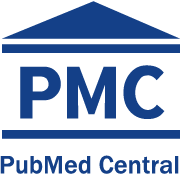Peruvian scientific production in medicine and collaboration networks, analysis of the science citation index 2000-2009
DOI:
https://doi.org/10.17843/rpmesp.2010.273.1488Keywords:
Bibliometrics, Biomedical research, Health research evaluation, Collaboration indicator, PeruAbstract
Objectives. To describe the Peruvian scientific production in indexed journals in the Institute for Scientific Information (ISI) and the characteristics of the institutional collaborative networks. Material and methods. All papers published in the ISI database (Clinical Medicine collection) were included during 2000 to 2009 with at least one author with a Peruvian affiliation. The publication trend, address of corresponding author, type of article, institution, city (only for Peru), and country were evaluated. The collaborative networks were analized using the Pajek® software. Results. 1210 papers were found, increasing from 61 in 2000 to 200 in 2009 (average of 121 articles/year). 30.4% articles included a corresponding author from a Peruvian institution. The average of authors per article was 8.3. Original articles represented 82.1% of total articles. Infectious diseases-related journals concentrated most of the articles. The main countries that collaborate with Peru are: USA (60.4%), England (12.9%), and Brazil (8.0%). Lima concentrated 94.7% of the publications and three regions (Huancavelica, Moquegua and Tacna) did not register any publication. Only two universities published more than one article/year and four institutions published more than 10 articles/year. Universidad Peruana Cayetano Heredia published 45% of the total number of articles, being the most productive institution and which concentrated the most number of collaborations with foreign institutions. The ministry of Health –including all dependencies- published 37.3% of the total number of publications. There is a higher level of collaboration with foreign institutions rather than local institutions. Conclusions. The Peruvian scientific production in medicine represented in the ISI database is very low but growing, and is concentrated in Lima and in a few institutions. The most productive Peruvian institutions collaborate more intensively with foreign journals rather than local institutions.Downloads
Download data is not yet available.
Downloads
Published
2010-09-28
Issue
Section
Research Articles
How to Cite
1.
Huamaní C, Mayta-Tristán P. Peruvian scientific production in medicine and collaboration networks, analysis of the science citation index 2000-2009. Rev Peru Med Exp Salud Publica [Internet]. 2010 Sep. 28 [cited 2025 Aug. 2];27(3). Available from: https://rpmesp.ins.gob.pe/index.php/rpmesp/article/view/1488





























